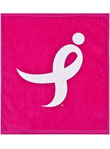October is Breast Cancer Awareness Month-Mammograms
October is Breast Cancer Awareness Month
October Breast Cancer Awareness month is full of goodies from your local mammography clinic. Susan G. Komen is behind all the goodies. This group is fighting tirelessly for your health. If you are 40, you need to begin having a mammogram yearly. If you are under 40 with a history of breast cancer in your family, then get a mammogram earlier than 40.
If you’re reading this and decide nothing applies to me here…think twice. You know other women who need this information…a mother, aunt, grandmother, friend who may be described in the two groups above. Why wouldn’t you want them to stay healthy?
This info is taken from the Susan G. Komen site for you to read and be informed. Make it a fun month (I know, what fun is there in a mammogram?) and participate. The ‘freebies’ are what may draw you in to save your life!
For more information, call Susan G. Komen for the Cure
® at 1-877 GO KOMEN (1-877-465-6636) or visit www.komen.org.
What is a Mammogram?
A mammogram is an X-ray of the breast. It is the best screening tool used today to find breast cancer early.A mammogram can find cancer at an early stage when it is small and easier to treat. Starting at age 40, all women should get a mammogram every year. If you are under age 40 with either a family history of breast cancer or other concerns about your breasts, talk to your health care provider about when to start getting mammograms or other tests, such as breast MRI, and how often to have them.
It is also important to have a clinical breast exam at least every 3 years starting at age 20 and every year starting at age 40. If you have a breast problem, a mammogram can also be used to help diagnose it. Mammogram images can be stored on film standard mammography) or on a computer (digital mammography).
The X-ray uses very little radiation. A radiologist looks at the X-ray for signs of breast cancer or other breast changes. These changes may be small and hard to see, so it is best to have a mammogram every year. That way, your X-rays can be compared from year to year to see if there have been any changes. Mammograms are very accurate, but they are not perfect. They can find breast cancer before it can be felt. But sometimes they can miss cancer.
That is why it is important to also get a clinical breast exam in addition to a mammogram. It is also important to know how your breasts normally look and feel between screenings. If you notice any change, see your health care provider. Common questions about mammograms.
Why would I want to find out if I have cancer?
Finding cancer early makes it easier to treat, often without losing a breast. A mammogram can find cancer before you notice any problems in your breast.
What if my doctor never mentioned it?
Bring up the subject yourself, ask for a referral to get a mammogram or contact a local facility directly.
Am I too old to get a mammogram?
No, you may be surprised to learn that your chance of getting breast cancer increases as you get older. That makes it even more important to get a mammogram.
Is it painful?
To get a good picture, the technologist needs to flatten the breast. You may feel uncomfortable, but it only lasts a few minutes.
What if I cannot afford a mammogram?
Most insurance plans cover mammograms, including Medicare. There are many free or low cost programs. Call the Komen breast care helpline (1-877 GO KOMEN or 1-877-465-6636) or your state department of health for information about low cost programs in your area.
What You Can Do Now About a Mammogram
1. Choosing a certified mammogram facility.
Your doctor may refer you to a mammography
facility or you may choose one that is convenient
for you, such as a mobile mammography van.
Wherever you go, be sure to look for the Food
and Drug Administration (FDA) certificate and
accreditation by the American College of Radiology
(ACR). These should be displayed. Check the
expiration date to assure that the facility is certified.
2. Pick a good time to have a mammogram
A mammogram may be uncomfortable if you have
sensitive breasts. If you are still menstruating, plan
to have your mammogram the week after your
period, when your breasts are less tender.
3. Gather your past history, breast problems, etc. information
When you make your appointment, you will be
asked about:
• personal history of breast cancer
• family history of breast cancer
• current breast problems
• past breast surgery
• the date(s) of your past mammogram(s)
• the name and address of your doctor and any
facility where you’ve had a mammogram before
4. Know what to expect at your mammogram appointment
During a mammogram, your breast is pressed
between two plastic plates in at least two views.
These plates flatten the breast tissue so that a good
picture is taken. This will not harm your breast.
In fact, flattening it reduces the amount of X-rays
needed. Although it may be uncomfortable, it
should not hurt. Be sure to tell the technologist
if the pressure becomes painful.
5. Come prepared for your mammogram appointment
Wear a shirt that you can take off easily. If you
use deodorant, talcum powder or lotion on your body
6. Getting your mammogram results
If you do not have your results within 2 weeks,
call your doctor or the mammography facility.
Don’t assume your results are normal if you have
not gotten them.
7. Talk with your doctor about your mammogram results
If your mammogram shows anything unusual, talk
with your doctor about what to do next. Ask if
your mammogram results indicate that you have
dense breast tissue. If so, discuss what this means
for you and what, if anything, you should do next.
Thank you to Susan G. Komen foundation for this information. You’ve done so much for the men and women in our lives!








That is why it is important to also get a clinical breast exam in addition to a mammogram. It is also important to know how your breasts normally look and feel between screenings.
keira recently posted..moving
Keira,
Absolutely true regarding the clinical breast exam. Hopefully women will take the time to have both.
Very helpful post Donna.
Linda Kinsman recently posted..Reading Eggs- Two Week Free Trial Offer
I encourage everyone to go. I waited two years more than I should have because I was afraid. It is not a big deal. Please go! I had to go for a follow up on one of my breasts and i took my daughter to show how easy it was(she was 22 years old)
Janet,
Thank you for your encouragement to all the readers. Ignoring an issue does not make it go away.